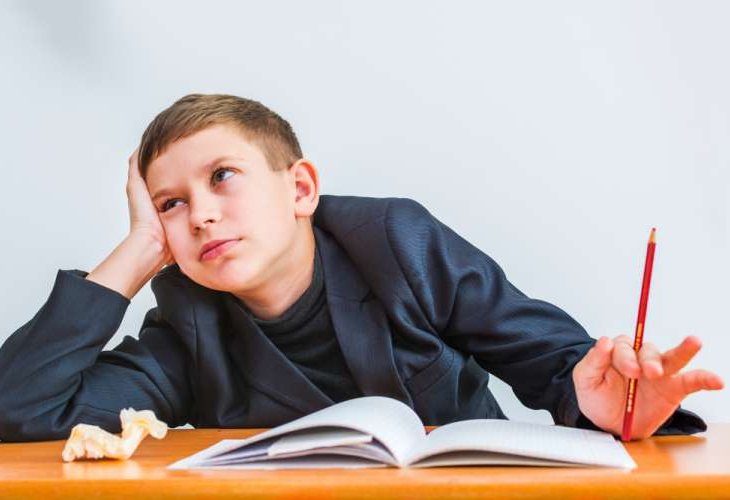Understanding ADD and ADHD: Symptoms, Diagnosis, and Treatment
Why is early diagnosis of ADD and ADHD crucial? What's the distinction between ADD and ADHD? Can these disorders be treated in adults too?
 (Photo: shutterstock)
(Photo: shutterstock)By age 12, about 5-10% of school-aged children experience attention deficit disorders, most commonly ADHD. Boys are three times more likely than girls to have this disorder. However, when it comes to ADD, the ratio between boys and girls is roughly equal.
With so much information out there, what exactly is attention deficit disorder? Who can suffer from it? What are the symptoms, how is it diagnosed, and most importantly – how is it treated? Here's everything you wanted to know.
Children (and adults) with attention deficit disorders struggle, as the name implies, with issues related to focus and concentration. They often experience impulsivity and a lack of judgment in many situations, and frequently demonstrate hyperactivity. These disorders can lead to academic underachievement, social difficulties, developmental and psychological issues, and behavioral challenges. Hence, early diagnosis and appropriate treatment are crucial.
Most children showing symptoms of these disorders are diagnosed during their elementary school years. In extreme cases, signs can be detected as early as preschool, although some children remain undiagnosed even as they grow older.
The two primary types of attention deficit disorders are ADD and ADHD, with the latter being more prevalent and recognizable. ADHD combines attention deficit with hyperactive behavior (Attention Deficit Hyperactivity Disorder). In contrast, ADD refers to attention deficit without hyperactivity (Attention Deficit Disorder). Often, children with ADD, particularly those with high intelligence, can mask their attention issues, leading to a delayed diagnosis.
Recognizing the Symptoms of Attention Deficit Disorders
In younger children, such as preschoolers, signs of attention deficit disorders include general restlessness, severe tantrums and crying spells, inability or unwillingness to complete tasks, difficulty following game rules, general lack of focus, and sometimes hyperactivity. Children with hyperactive attention deficits are often described as "powered by a motor," always moving quickly and impulsively. Young kids are also oblivious to dangers, seen in behaviors like climbing unsafe heights or running into streets. This behavior can provoke frustration from adults and peers, leading to social difficulties. As a result, affected children might become withdrawn or, in some cases, show aggressive behavior.
In slightly older children, such as those in elementary school, impulsiveness, rashness, and temper outbursts become evident, alongside tendencies to withdraw. Such children might face social rejection and sometimes exhibit aggressive behavior. Concurrently, they might show low academic performance, often unrelated to intellectual ability, avoid homework, and struggle with organization.
Rabbi Zamir Cohen - How to Handle a Hyperactive Child and Stay Calm?
As these children grow older, many drop out of school. As adults, they may struggle to find employment and retain jobs. Adults with attention deficit disorders are more prone to addictions – smoking, alcohol, drugs – and even crime. They're also more susceptible to accidents, both on the road and otherwise.
Despite these difficulties, accurate diagnosis is essential. Some very active children are mistaken for ADHD sufferers when they may be experiencing other phenomena. Therefore, a comprehensive and precise assessment is crucial to provide the right treatment.
Diagnosis is conducted by pediatricians specializing in attention and concentration, child neurologists, or youth and child psychiatrists. They may consult other professionals and utilize varied assessments, such as educational-psychological evaluations, TOVA or MOXO tests, and more.
Effective Treatment Strategies for Attention Deficit Disorders
Early and appropriate treatment for attention deficits is vital. It can significantly aid patients and prevent the complex prognoses associated with untreated cases, from accident prevention to improved school or work performance and enhanced personal relationships and mental health.
Effective treatment is multi-faceted, addressing various aspects of the disorder simultaneously. Each patient requires a personalized treatment plan tailored to their specific disorder and accompanying symptoms.
Initial awareness of the disorder and available treatments can be incredibly beneficial. Often, children and adults with attention deficits don't understand their behavior, leading to low self-esteem and lack of confidence, which exacerbates their symptoms. Naming the disorder and explaining possible treatments offer an important initial relief.
The most recognized treatment is medication. Although such medications often carry a negative reputation, they can significantly help those with attention deficits, enhancing their behavior regulation and focus. However, medication should be precisely customized for each patient, as not all drugs suit everyone, and some could cause severe side effects worse than the disorder itself, necessitating treatment adjustments.
In addition to medication, comprehensive support treatment is recommended. Psychotherapy, personal coaching, neurofeedback, CBT, and similar methods can help a child build self-esteem, focus on strengths, manage stress, self-regulate, and develop learning skills despite challenges.
The sooner treatment begins, the better potential outcomes for preventing secondary challenges like emotional or psychological issues. Nonetheless, even in older patients or adults, help remains accessible, though acknowledging accumulated difficulties over time is necessary.
Rabbi Eyal Ungar - Attention Deficit Disorder

